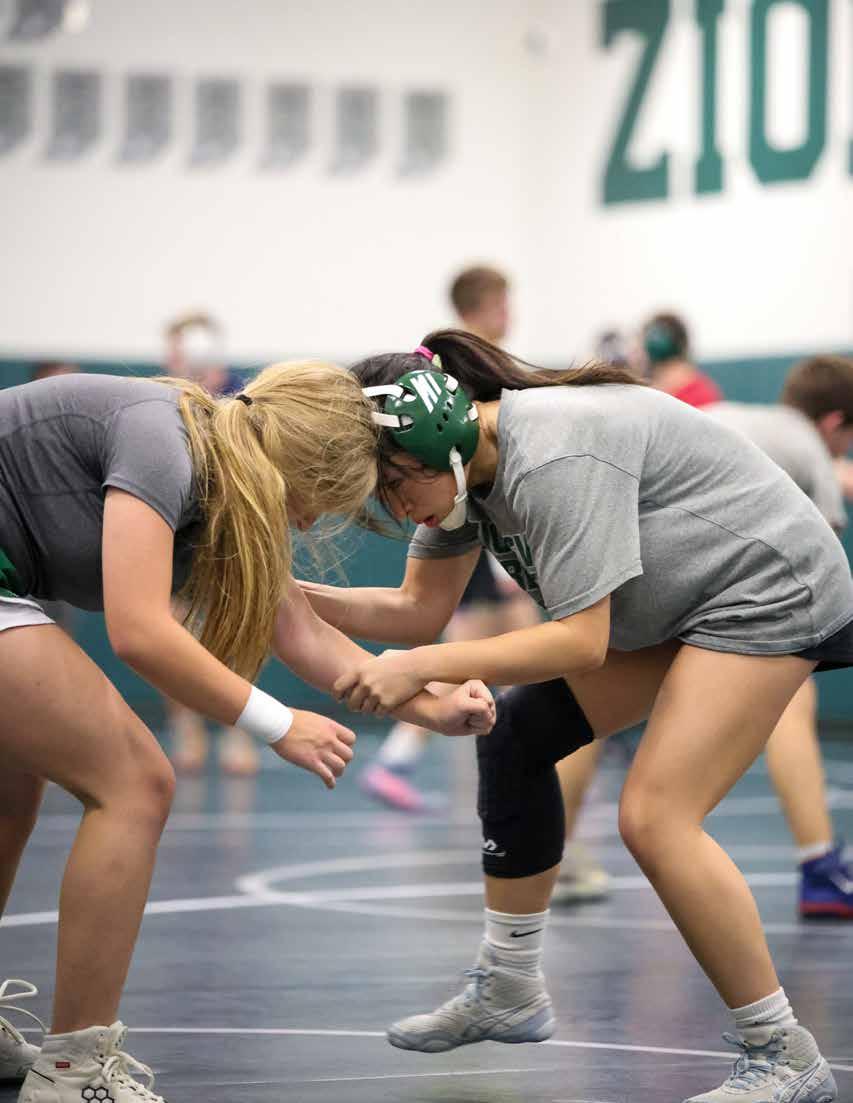
Editors-in-Chief
Emma Hummer
Marissa Villarrubia


Editors-in-Chief
Emma Hummer
Marissa Villarrubia
Print Editor
Ellie Vanderbur
Copy Editor
Brody Brown
Photo Editor
Josie Brackett
Social Media Editor
Grace Adlong
Sports & News Editor
Lilly Steele
Feature Editor
Emmy Lucas
Perspectives Editor
Srinithya Basireddy
Staff
Lucy Bean
Ant Farrar
Jonah Hunter
Abby Keck
Sammie Kulwicki
Luke Kouns

The mission of the Harbinger is to provide timely, relevant, and interesting content, while handling topics with respect and objectively. Harbinger aims to reflect the diverse nature of the student body of ZCHS by including those of all walks of life in the publication. The Harbinger serves as a public forum and invites letters to the editor and communication from others. The Harbinger is student-run and opinions in the magazine do not necessarily represent those of ZCHS or Zionsville Community Schools.
After completing a 50-point test, a notification lights up your phone, your grade in the class has been updated. But the first thing that catches your eye after logging into PowerSchool is the shockingly empty spot where your projected semester grade point average used to be.
This change, while intended to reduce stress, may have the opposite effect. Students rely on these numbers not just for motivation but for practical purposes, like maintaining eligibility for sports. While the administration is well-meaning, they might inadvertently increase stress by eliminating students' tools to track their academic progress.
The projected semester GPA previously visible on PowerSchool has been turned off by administration in an effort to reduce stress among students due to its potential inaccuracy. This GPA is not on any official transcripts and only gives us a look at our current grades. We understand the effort being made by administration to help, but ultimately it is causing more stress among students.
Students rely heavily on their grades as a way to affirm the hard work and dedication they have put into their studies. When this affirmation is taken away the motivation to get good grades dwindles.
This poses a problem for student
athletes as well; they may rely on that three-digit number for eligibility to play in their next game or compete in a weekend tournament.
We think that the GPA being taken away has increased stress among many students despite that being the opposite intention from administration. Many students make a goal for a GPA they want by the end of the semester. For some, it brings comfort knowing that their hard work is paying off because that number is rising. Even though we can see our cumulative GPA, it is helpful to look at what your semester GPA might be based on our current grades. Having our GPAs visible will keep us as students in the know. It sets a standard to understand where we’re at with our grades and it gives us something to work towards.
Ultimately, having that number there isn't too different from being able to see our actual grades. Both reflect our work and how it pays off. That number being visible to students is a quick way to see if they’re where they want to be.
Why does someone’s semester GPA cause more stress than individual grades for each course? Not knowing that little number makes a nuisance out of maintaining a personal standard for school and in some instances has the potential create more stress.
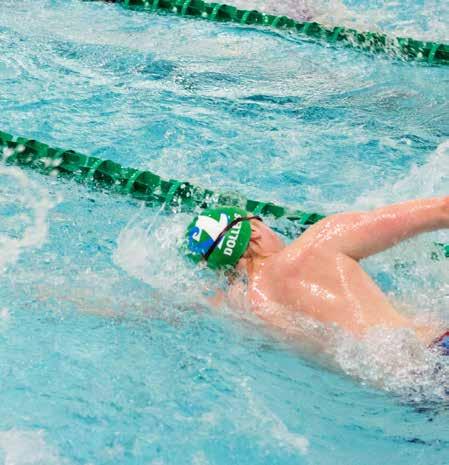
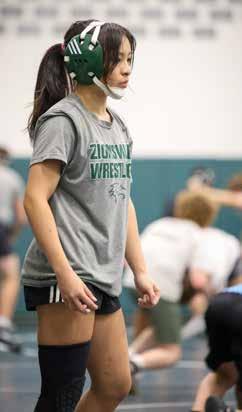

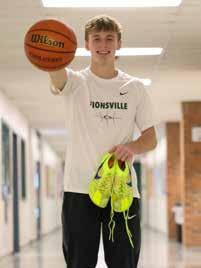
Experts urge students to stay prepared as unpredictable weather patterns intensify
By Ant Farrar, Staff
It doesn’t take a meteorology degree to notice the weird weather patterns and the recent hurricanes in Florida and southern U.S., but those who have studied these patterns are advising communities to stay prepared for more intense weather events.
David Krause, a former environmental science teacher at ZCHS, has observed a significant rise in hurricanes in recent years. Krause uses his science background to explain the changes he’s seeing in our weather.
“So many category 5 hurricanes have occurred in the last two or three years,” Krause said. “They’re getting worse and they’re getting much more frequent.”
The increase in recent hurricanes, that have caught the attention of the news, stems back to rising ocean temperatures.
“The ocean is warming up,” Krause said. “That’s more fuel for these hurricanes to form, so they’re going to be more prevalent and come more often.”
These hurricanes, while they may not have as strong of an impact in Indiana as they have in southern states, are still worth paying attention to.
Ryan Morse, a meteorologist at the WISH-TV weather station, said increasing water temperature is to blame for recent hurricanes like Hurricane Milton or Hurricane Helene.
“The warmer temperatures can be attributed to warmer sea surface temperatures and the La Niña setup,” Morse said. “During a La Niña pattern, cooler water temperatures have a domino effect on our jet stream pattern in the U.S.”
For meteorologists like Morse, responding to recent unusual weather
events, not just hurricanes, means long hours and constant surveillance when re sponding to extreme weather events, including tornado outbreaks.
“My fellow meteorologist Marcus Bailey and I were recently on TV for hours tracking what would end up being 23 tornadoes in a single night for Indiana,” Morse said. “Unfortunately, multiple lives were lost from an EF-3 tornado in Sullivan, IN and an EF-3 just outside Spencer, IN.”
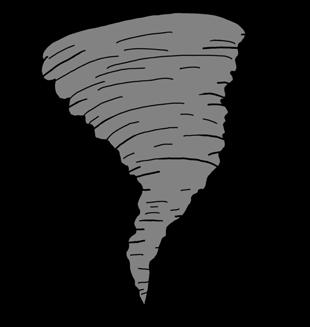
While these severe events are taking place in our very own home state, Indiana’s overall climate is also experiencing subtle, but noticeable shifts.
Lindsey Monroe, a meteorologist at the WTHR weather station, noticed a trend of above-average temperatures, and an increase in out of season tornadoes.
“We’re seeing more tornadoes in March and November outside of the typical tornado season from April through June,” Monroe said. “This would not be considered as extreme, but more so a very noticeable trend that can be prepared for over time.”
For Morse, Monroe, and Krause, noticing these gradual changes and helping the public prepare for severe weather is a priority as Indiana faces a future with more unpredictable weather. Their advice reveals the increasing importance of awareness of local weather patterns, helping Hoosiers stay safe no matter what comes their way.
“Indiana is truly a state where we can get any form of weather,” Morse said. “Always have a plan, just in case.”
Severe Weather Tips 1 2 3 4 5
When you hear thunder, you’re within striking distance of lightning. Go indoors when you hear thunder.
Sirens are meant to be heard outside and cannot be relied on if you are indoors; have a weather radio or weather alert app.
Know how to be alerted to possible severe weather, make a plan of where to take shelter or evacuate, and keep an emergency disaster kit ready at all times
Have a location designated as your safe spot regardless of what kind of building you are in, a basement or storm shelter is best. An interior room, stairway or hall without a window or door to the outside is acceptable.
Although not hurricanes, storms, floods, and tornadoes are common occurrences to Hoosiers.
By Gabby Okusipe, Guest Reporter
It was the future. It was life. It was hopes and dreams. It was the big break. It was the difference between happiness and utter crushing disappointment. It was all there in one simple click of the submission button.
In 2023, 87.3 percent of college students accepted financial aid according to savingforcollege.com. That’s about 1.99 million full time undergraduate students. Although this may seem like a large number, over 38 percent of students will require federal student aid.
College in America is expensive and a big step towards the future for a lot of high school students. Scholarships, grants, and the Free Application for Federal Student Aid (FAFSA) and other kinds of aid provide assistance that students may need. But navigating that can be difficult without assistance or a basic understanding of what to expect.
The first step is understanding the different kinds of aid.
“Grants and scholarships for the most part, are going to be free money that you don’t have to pay back,” College and Careers Teacher Braden Hall said. “So in terms of a pecking order, grants and scholarships should be your first two options.”
Scholarships and grants are ways of paying for college and awarding money. One of the recommended and common ways of receiving aid is from the federal government using FAFSA.
The FAFSA looks at your family’s financial situation and gives a sum of money based on the information filled out on the form. It’s also often a suggestion or require ment of colleges before they give you your final attendance cost.
“People that fill out the FAFSA generally see some sort of assistance or aid,” Hall said. “I think the FAFSA does have a lot of misconceptions, that people think that it would not be worth their time filling out. I would encourage them to do that every single year, no matter what.”

But besides the FAFSA, there’s thousands of third party and non profit scholarships available. In this age of technology, finding them is becoming increasingly simple. Now websites specialize in providing information on scholarships and how you can access them.
“I think a lot of it just comes down to personal responsibility and being aware of the deadlines yourself, it’s also just being willing to put in the time to write an essay,” Hall said.
According to college counselor Cathy Patane never trust yourself in remembering deadlines, requirements, and essay prompts. It’s easy to lose track of those things, especially when juggling multiple applications.
When applying for various scholarships, especially ones that have no essay requirements it’s easy to forget what scholarships you have applied for and when the results will come out. Writing them all done on a document is an easy way to avoid confusion.
When asked how she planned on looking for scholarships, senior Alexandra Gallagher said she used different websites like niche. com and scholarshipowl.com.
After making an account of these websites they will send you information

“Focus on a smaller number of scholarships that truly align with your strengths, interests, and goals.”
Focusing on more personal scholarships greatly increases your chance of actually winning. Hall, Patane, and Gallagher can all agree that although the scholarship websites are extremely helpful doing your own research is highly suggested. It not only allows you to find more personal scholarships but it also helps to give you more experience in what the scholarship process is.
“Just keep plugging away and keep seeking the opportunities,” Hall said. “Putting in the work, checking the deadlines, and I think those that do that will put themselves in the best position to receive a scholarship or receive some sort of assistance.”
Scholarships are a game changer for any current or upcoming college students. It may seem like a difficult situation to navigate, but just dedicating hard work and time could benefit you in ways that will still affect you years into the future. Patane encourages students not to feel discouraged on the scholarship search.
“Scholarship competition is fierce,” Patane said. “But keep in mind that every application improves your skills. Focus on your unique story, there is always a scholar-

By Sammie Kulwicki and Lucy Bean, Staff
“We always watch ‘Elf’, ‘Polar Express’ and ‘A Christmas Story’, and we have this big elaborate food board that my mom always makes.”
- Georgi Moreland, senior
“Every year me and my family go skiing in Big Bear. It’s just fun and I like being with my family.”
- Luke Wellman, freshman


“Every winter me and my cousins go outside when there is snow and go in the hot tub, get out and do snow angels then get back into the hot tub. It’s a tradition we do every year and just a great time where everybody laughs.”
“We [family] go to the em bassy in Fort Wayne and we go to the fes tival of
trees. I’ve always loved seeing Christmas trees getting decorated and we sometimes would watch the Great Christmas Light Fight show and I love how people are so creative and I try to take the best pictures and pick out my favor ite tree.”
- Kelsey Harris, junior
“Every Christmas Eve, me and my family go and look at cool Christmas lights. I love going because it’s a good way to spend time with my family and a fun way to celebrate.”
- Nadia Kahan, freshman

- Jalin England, sophomore
“I think my favorite part is probably hanging out with my family every night when we open gifts and I like the decorations and everything. I also like that we put up a Christmas tree, but instead of calling it a Christmas tree. We call it a Hanukkah bush.”
- Sam Nefouse, sophomore

“We play dreidel, a game where you spin a small top and exchange chocolate coins, which is really fun, just spending time with family.”
- Talia Armstrong, junior
“ My father reads the same books every Christmas, they were pretty interesting and I used to go and listen to them and now my younger siblings do. It is all about community and family.”
- Jack Stark, senior
By Lucy Martin, Guest Reporter
The empty cement block walls. That’s what you notice first. Next, you realize the classroom has no windows. Yellow-tinged fluorescent lights fill your eyes and reflects off the carbon gray tables and chairs. More than just boring to look at, a dull-looking classroom is where students may find themselves unmotivated.
“I think [boring classrooms] make me not want to do my work and [they] make my mood match the way the classroom looks,” senior Lucy Long said. “I’m not motivated, and I find that I don’t understand the information as well when it’s in a boring classroom than when it’s in a positive classroom.”
Students experience these classrooms multiple times throughout their school day.
According to the Eberly Center at Carnegie Mellon University, with the long school schedule, it is easier for students to lose motivation while facing these settings multiple times within the school week.
According to assistant principal Katherine Willour, the setting of a bare classroom negatively affects the motivation of students and may decline their mental health, leading to poor academic performance.
In a survey conducted by the National School Climate Center (NSCC), 64% of students said they feel like colorful and decorated classrooms help promote their focus on schoolwork and increase their motivation to complete tasks.
“I feel like in classrooms that are more colorful, have more positive vibes, and decorations, I feel more motivated ,” Long said. “I actually want to be there, and it helps keep a positive mindset if your surroundings are colorful and vibrant.”
English teacher Laura Harmon, commits to the mental well-being of her students, including the comfortability they feel in her classroom. While teaching content is important to her, support and safety is her number one priority as a teacher.
“I want to make sure that every student feels comfortable in my classroom,” Harmon said. “And that they can openly
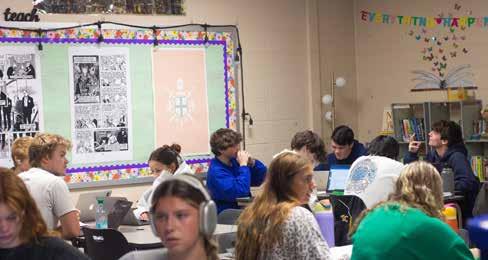
share their opinions if that’s important [to them].”
According to the NSCC, 18% of students do not feel comfortable in more than four of their classrooms. Teachers like Harmon attempt to help their students feel as comfortable as possible in their classrooms. However, not all teachers prioritize comfort levels in their classroom, according to Education Northwest.
The look of the classroom isn’t the only classroom characteristic that affects students. According to the NSCC, 59% of students do not feel supported by their teachers in more than half of their classes. These numbers set a new perspective for assistant principal Katherine Willour, as she strives to promote student mental health and academic support throughout the school.
“We’ve talked about making sure we’re advertising all the resources that are available,” Willour said. “And making sure students have access to all of them.”
Willour oversees teachers daily, often doing sit-ins in classrooms, where she evaluates the teachers and how students react to their academic environment. She takes what she observes to the administrative level where they assess what methods and classroom characteristics benefit students’ success.
“I’m able to consistently see that when teachers build relationships with students, they know how to have high expectations that match the abilities of their kids,”
Willour said. “In an environment where students want to do well, where they enjoy the class, where they enjoy the interactions with their peers and teachers, that sets a student up to be more successful in general.”
According to Education Northwest, positive student-teacher relationships increase cooperation and engagement by students in the classroom, also contributing to a more welcoming and comfortable environment.
Senior Ana Rottmann suggests that a QR code or form should be present in classrooms for students to fill out. These could be used by students to express how they feel about their academic progress or mental well-being to their teachers and foster a sense of support and connection in the classroom environment.
“We do have a growth mindset about it (mental health help), I don’t think that things are perfect and there’s always room to grow,” Willour said. “We have a collaborative environment where our teachers, our administration, and our counseling department talk to each other about feedback to make sure that we work on it.”
Striving to live up to the school’s motto “Everyone belongs here,” Willour said that through the discussion of open and honest student experiences, changes can be made to classrooms to provide the utmost positive, comfortable, and safe environment for students.
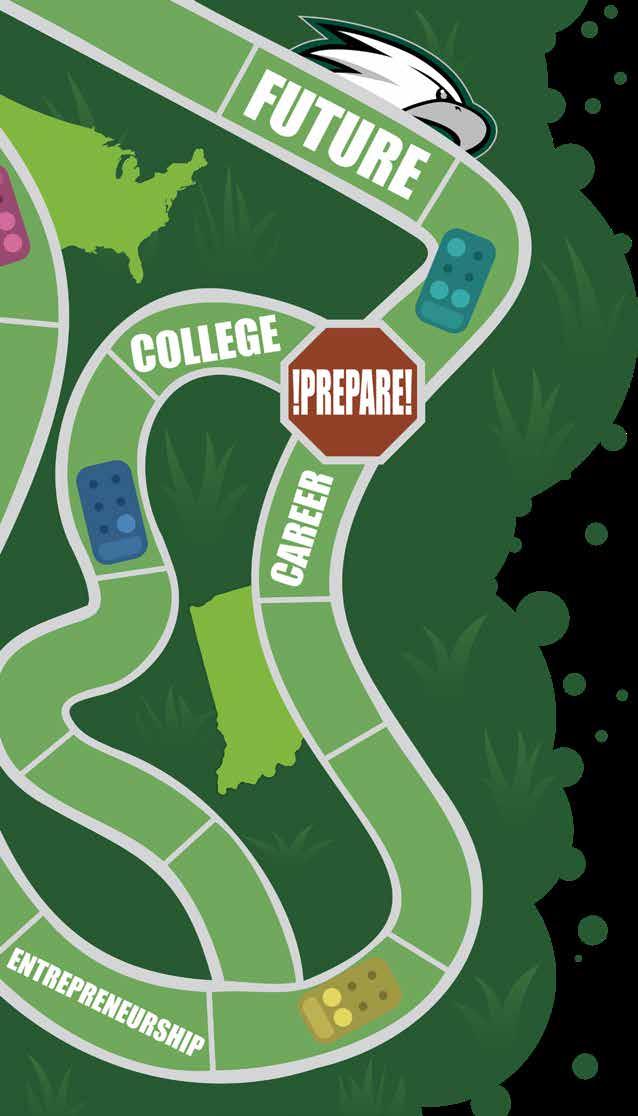
By Abby Keck and Luke Kouns, Staff
According to the 2020 U.S. Census, 26.5% of students participate in school clubs. Many of these students join these clubs for fun, while others seek benefits from the unique experiences they provide. Providing long lasting benefits is a goal that many Zionsville clubs have reached, including the Zionsville branch of Model U.N.
“[Model U.N.] provides students the opportunities to take on roles of foreign nationals,” Model U.N. sponsor Paul Magoni said. “To express their opinions of how they feel diplomacy should take place in the world today.”
Students who participate in the club are responsible for representing a country in the U.N. and relaying that country’s wants and needs. Through attending regulated committees, students use research and developed arguments to act out discussions and debates between foreign nationals.
“I think this is one of the more valuable things that [students] end up having to work with. This causes students to create multiple perspectives of a single event,” Magoni said. “It’s not just the United States’ point of view. It’s how other countries view it around the world.”
Model U.N. is a highly academic activity, where students are expected to do their own credible research and create their own arguments the same way they would be expected to in a career. To present these arguments effectively, students must learn, according to Model U.N. Secretary General, senior Jack Stark, “completely new ways of navigating discourse.”
“There’s been a lot of benefits that these clubs have offered me, not just in an academic setting, either,” Stark said. “ I think they’ve had enduring effects on my interests and what I want to go into.”
Model U.N. doesn’t just help students develop the ability to write research papers, but teaches them critical human skills such as communication and working with people who, Magoni explains, come from “multiple different experiences and ideas.”
“If you understand that now, and you can see it on a global scale, it will help you when you get into your job, when you have to think critically about a situation or you’re trying to solve a problem,” Magoni said.
The Zionsville Speech and Debate teams offer students a chance to advance their oratory skills through a variety of helpful events.
“In the case of debate, it’s about writing those cases,” senior Debate team leader Jack Stark said. “The act of actually presenting them against an opponent is somewhat unique.”
The Speech and Debate team is a rare chance for students to practice their skills speaking, presenting, or even performing in front of an audience while receiving feedback on how to improve.
“[The Speech team] gives you the confidence to stand in front of a group of people and present information that you may or may not be comfortable with,” Speech and Debate adviser Laura Harmon said. “Which is a good skill to have, just because talking to people in general can be tough.”
After high school, students will enter a world full of new obstacles and challenges. It is important that students learn to overcome these challenges during their time in school; something the speech and debate teams are sure to do.
“The whole premise of both the clubs is in itself, a challenge,” Stark said. “It’s challenging for these students to be in front of a room or a judge and talk about something that they might be unfamiliar with.”
Speech and Debate isn’t just an activity for those who already have speaking skills. According to Harmon, if you put in the work and give it your all, “anyone can succeed.”
“If anyone engages in these activities, they will inherently gain the benefits of them in terms of public speaking, research and mindfulness,” Stark said. “They will grow as a person because they’re pushing those boundaries for themselves.”
If you want to work towards solving the problems of the world, Key Club provides students with that opportunity while also teaching them important skills for working with other people and organizations.
Key Club is partnered with Kiwanis International, a community service organization focused on helping children worldwide.
The sponsor, Spanish teacher Darlene Lankenau, and the current president, senior Andy Qin, work with other student leaders within the club to plan activities.
Club members participate in service projects where they form committees to help both people in the local community and people in need elsewhere. This club helps prepare students for life after high school by promoting leadership skills and community impact.
According to Lankenau, something that she’s seen even in her brief time with the club is how it empowers students to take a leadership role, even if it’s a quiet leadership role.
Qin meets with the rest of the Key Club leadership council to plan out meetings and research new service projects for the other members to participate in.
“Being involved in these volunteer opportunities and being involved in leadership roles, especially in the club, can help prepare students for community involvement and impact beyond just high school,” Qin said.
Some current projects that Key Club is working on are the shoe drive for students in the Indianapolis school district and the Boone Hearts Boone initiative helping people in Boone, North Carolina who have been affected by the recent hurricane.
“Even in a very subtle way, they’re learning how to organize and how to work with those soft skills that employers look for in the future,” Lankenau said. “That includes skills like remembering to invite someone to things appropriately, thanking them for their involvement, and presenting our organization to the community in a very professional way.”
If you’re a business student, Business Professionals of America, or BPA, provides many opportunities for students interested in business careers to learn more about business and practice essential skills. However, the activities and skills learned can help students no matter what they’re going into after graduating.
In BPA, students compete in competitions and give presentations relating to business topics. The sponsors are business teachers Abigail Wallace and Melissa Huhn, who are both new sponsors for the club. The club is led by a council of students in place of a traditional president.
Students can take tests online, or they can travel to different conferences to compete as a team or individually where they present to several judges at the regional, state, or national level. Competitions encompass several business related topics, including business ethics, laws, and human resources.
Learning about and engaging with business topics during high school in this way is a great opportunity for students who want to go into business careers after graduation.
“I think it really helps students get ready for college or any type of higher education, especially if you’re wanting to go into business school, or you’re wanting to major in anything like finance, accounting, marketing or management,” Huhn said.
Although the club is focused on business, several of the skills students learn in BPA can apply to any career.
“It helps build your confidence, your speaking skills, and your presentation skills. It helps you make new friends outside of the people that you might know in high school here, because you’re competing against high schools all across Indiana,” Huhn said.
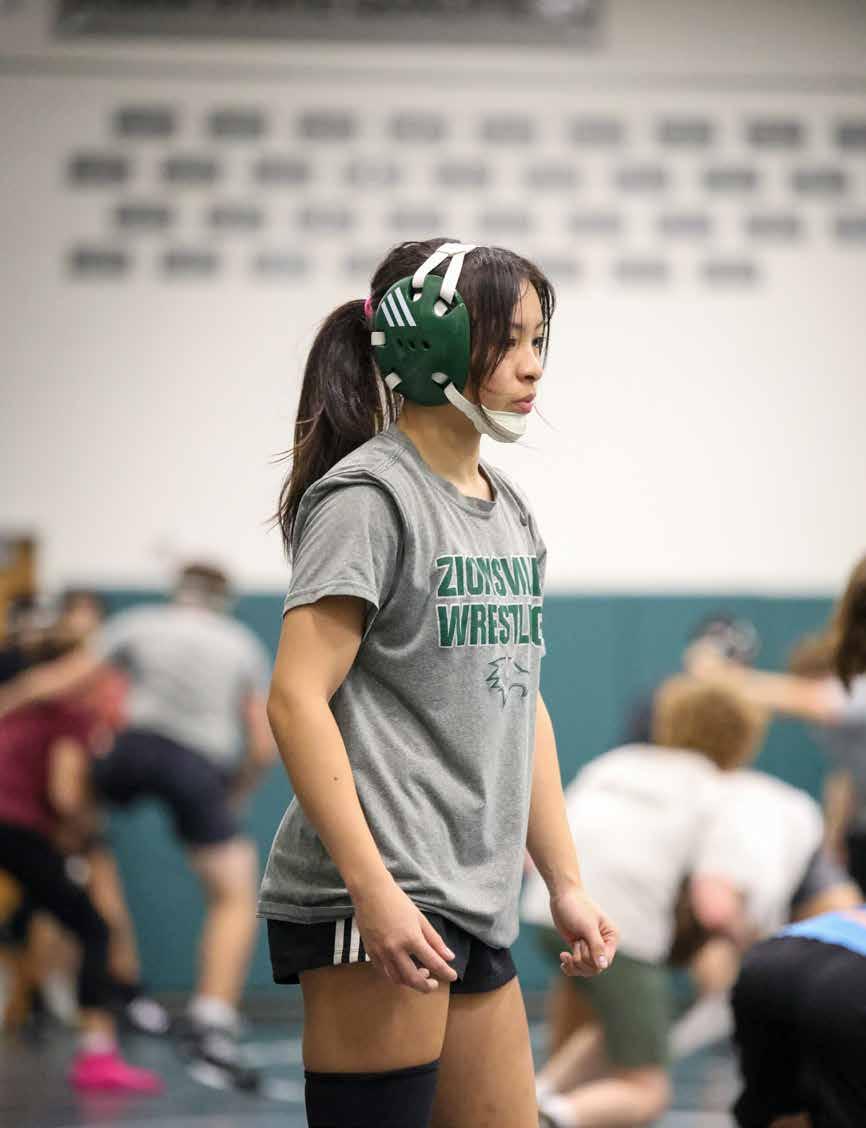
By Brynn Dieckmeyer, Guest Reporter
When Zionsville’s lone female wrestler stepped onto the mat during her junior year, she barely heard when the crowd erupted into a cheer as her opponent struggled beneath her, desperate to escape. It was current senior Breana Chau’s fastest match yet – a mere 24 seconds – and she pinned a girl a weight class above her. The entire gym roared in celebration as the referee raised Chau’s hand in victory, but in that moment, her entire world was silent as she stood alone, unaware of the true support she had.
According to the National Federation of State High School Associations, the number of high school girls who competed in wrestling nearly doubled from 2022 to 2023. In both scholastic and collegiate levels, it is one of the fastest growing sports in the United States.
With this recent rise in popularity, the Indiana High School Athletic Association officially sanctioned women’s wrestling as a varsity sport in April. Zionsville will feature its first ever all-girl’s wrestling team this season.
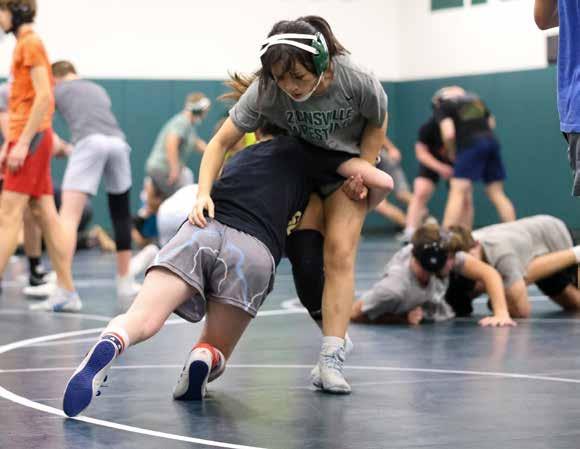
Welch said. “I’m reading articles, I’m reading books, I’m seeing how I can improve as a coach.”
“I was so excited to have girls on the team,” Chau said. “Being a team with different genders, that’s still a team, but it’s so much different with a sisterhood than a brotherhood.”
Chau had shifted her focus to her girls rugby team at the time of IHSAA’s announcement, but the introduction of Zionsville’s new wrestling team reignited her passion for the sport and prompted her to return.
“We had interest last year. It was the first time we had an individual come out and have a good experience,” wrestling head coach Doug Welch said. “In the United States, girls wrestling is the fastest growing sport, so I went to different female sports teams and talked to them about why they should join.”
In past months, Welch has worked with various coaches in order to prepare them for the season. Practices began in October, and the current team of six female wrestlers works alongside the boys to train for matches.
“I have coached girls wrestling before,”
While it was possible for all genders to wrestle in past years, Welch believes that the addition of an all-girls team will encourage more young women to join. It will allow them to explore their skills, wrestling opponents with a more comparable body strength and stature.
“I feel like girls bring a lot of value in sports, and it’s been welcomed and we’re just excited,” Welch said. “I think it’s new; it’s fun. I look forward to watching it grow and hopefully establishing itself into a really strong program here at Zionsville.”
Coaches Dylan Goudy and Molly Keller joined Welch in leading Zionsville’s new team. Overall, they expect that separating boys and girls in competition will give female wrestlers a better chance to advance further in state tournaments.
“Physically, I had much less endurance compared to the guys, especially since I was practicing with them,” Chau said. “There would be moments where I was able to over-
power my opponents or other men, but in general, I was kind of getting beat down.”
While Chau acknowledges that she is “not the typical wrestler,” she is grateful for the resilience and lessons her time with the boys team taught her.
“At first, I used to think I had very little support, and there wasn’t much I could do about it,” Chau said. “But now I’m able to support myself in the sport mentally in ways that I don’t have to have another girl there with me.”
Both Welch and Chau said the introduction of a girls’ team will shed a more positive light on the sport as a whole. Their goal is to create ample opportunities for girls to advance their skills while fostering a sense of team camaraderie.
“Their view is, it’s masculine, it’s aggressive, it’s dirty, it’s sweaty, it’s unattractive, it’s unfavorable,” Chau said. “But girls wrestling, they can change that. With a new team, we can completely change the perception.”
ALL AROUND ATHLETES
ALL AROUND ATHLETES
ALL AROUND ATHLETES
ALL AROUND ATHLETES
ALL AROUND ATHLETES
ALL AROUND ATHLETES
ALL AROUND ATHLETES
ALL AROUND ATHLETES
ALL AROUND ATHLETES
ALL AROUND ATHLETES
ALL AROUND ATHLETES
ALL AROUND ATHLETES
ALL AROUND ATHLETES

ALL AROUND ATHLETES
ALL AROUND ATHLETES
ALL AROUND ATHLETES
ALL AROUND ATHLETES
ALL AROUND ATHLETES
ALL AROUND ATHLETES
ALL AROUND ATHLETES
ALL AROUND ATHLETES
ALL AROUND ATHLETES
Alana Day, junior, plays soccer and runs track. She has played soccer since she was young and decided to run track when she quit basketball.
“I wanted to do something during the spring season, other than just club soccer, and also thought it would be a fun thing to do in high school,” Day said.
Middle school sports look a lot different from high school sports. During high school, sports become more serious.

ChaseWilson, senior, plays football and basketball. He’s played club basketball and is committed to play football at Washington and Lee University.
“I fell in love with (football) at an early age and it was always kind of my favorite,” Wilson said.
ALL AROUND ATHLETES
ALL AROUND ATHLETES
ALL AROUND ATHLETES
ALL AROUND ATHLETES
ALL AROUND ATHLETES
ALL AROUND ATHLETES
ALL AROUND ATHLETES
Zionsville’s demanding academics challenge students to balance sports, social life and school
By Lilly Steele, Sports and News Editor
“Middle school was less rigorous because we didn’t have a school soccer team in middle school and it was just club,” Day said.
Soccer and track go on during different seasons, this helps Day balance her schedule. During winter, Day said she takes a break from club soccer to “work on my sprints and my technical stuff so I can develop more skills.”
Planning around sports comes easily to Day, who thinks ahead for deadlines.
“I have a planner that I [used to] schedule everything and I make sure I have all my deadlines written down,” Day said.
While Day hasn’t decided what sports to play in her senior year, she knows she’s dedicated to soccer.
“I have been trying to attend some of the college scoutings for soccer and trying to see if I actually have an interest in playing college or running,” Day said.
With all of the drawbacks of playing two sports, there are also a lot of upsides.
“Sometimes it is hard, especially during soccer season,” Day said. “It’s worth it because of the connections you get to make on the team.”
Balancing sports can be difficult, especially during the summer months. Many sports use summer to keep players in shape and work on skills, leading to many overlapping practices.
“You’d be going from football practice to basketball practice, but the two coaches are pretty good about making it doable,” Wilson said.
Wilson said he lost weekends and freetime during the summer with multiple sports practices throughout the week.
During the school year, completing homework is an added challenge to playing multiple sports.
“Throughout the week you sit down and do your homework all the time. You don’t really have much free time, but that opens up your weekends to hang out with friends,” Wilson said.
This year Wilson decided to not play basketball to focus on other commitments.
“It’s just the end of my career,” Wilson said.
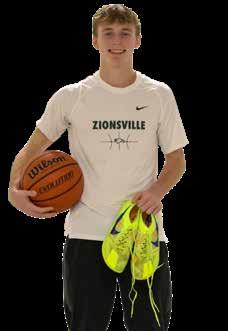
Owen Haan, junior, plays three sports; basketball, cross country, and track. Starting from a young age, Haan has always played three sports.
“I started basketball in kindergarten and I started running in sixth grade,” Haan said.
Haan favors basketball and cross country for the team aspect and says the practices are different.
“Basketball is a lot more structured,” Haan said.
He likes both because switching between them feel like a new experience.
To stay healthy while playing all these sports, Haan ensures he eats enough and gets lots of sleep.
“Organizing my time helps a lot in preparing the day before and just kind of having a schedule of everything that I’ll have that day,” Haan said.
Sports aren’t just about athletics, playing sports can teach athletes a lot of life skills.
Haan said he’s learned about traits like perseverance and determination.
“It’s helped me, even in school, with managing my homework and everything,” Haan said.
Each sport brings its own challenges, but balance is key.
“It is difficult, mentally and physically, but I think taking rest seriously is helpful,” Haan said.
While he isn’t decided about playing in college, Haan plans to continue playing for the rest of high school.
“It just kind of depends on how the rest of the seasons go,” Haan said.

Amelia Ledford, freshman, plays basketball and volleyball, two sports she says have a lot in common.
“The timing on blocks I feel like has helped me with my timing on rebounds and being able to move side to side,” Ledford said.
Playing two sports also creates lots of scheduling conflicts as the sports sometimes overlap.
“During volleyball season I had stuck with volleyball, then in my free time over the weekends, I would train for basketball but I couldn’t really go to any of the workouts,” Ledford said.
With back-to-back seasons, Ledford prioritizes school and sports over socializing.
“It’s very rare for me to be able to go hang out on the weekends,” Ledford said. “Most of the time my friends are on my team and that’s how we hang out.”
Ledford also plays club volleyball, which adds another layer to her schedule.
“When I have [basketball] games I can’t go to club practice, but most of the time my coaches were very lenient,” Ledford said. “It really depended on the coach.”
However, Ledford favors basketball over volleyball because of the competitiveness and “the girls that I’ve been able to meet playing,” basketball.
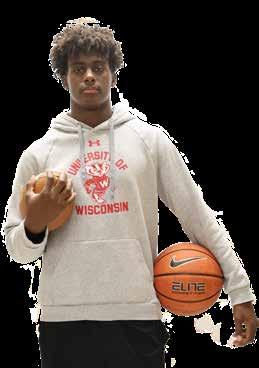
Eugene Hilton, senior, has played football and basketball. He wanted to play both this year, but the process of graduating early posed some challenges.
He chose to play both sports to keep him active because he loves each one.
“Basketball is something that I grew up playing, being able to play it for my last year makes me happy,” Hilton said.
While he likes both sports he favors football, being from Florida and having former Colts wide receiver T.Y. Hilton as a dad.
“I was kind of born into it,” Hilton said. “It was something that I looked up to and then really took off with.”
Balancing two sports is something Hilton has down.
Hilton said he doesn’t practice much basketball during the football season, but he does both over the summer.
“In the summer you go back-to-back, but it’s not really as much of a challenge,” Hilton said. “You get to rest later in the day, but I think it kind of takes a toll on your body if you overwork it.”
Hilton has met many different people through playing two sports.
“You meet a lot of new people just by playing two different sports because one team has a lot of players and doesn’t cut anyone. Then the other team is 15 players and you guys would become a really close group,” Hilton said.
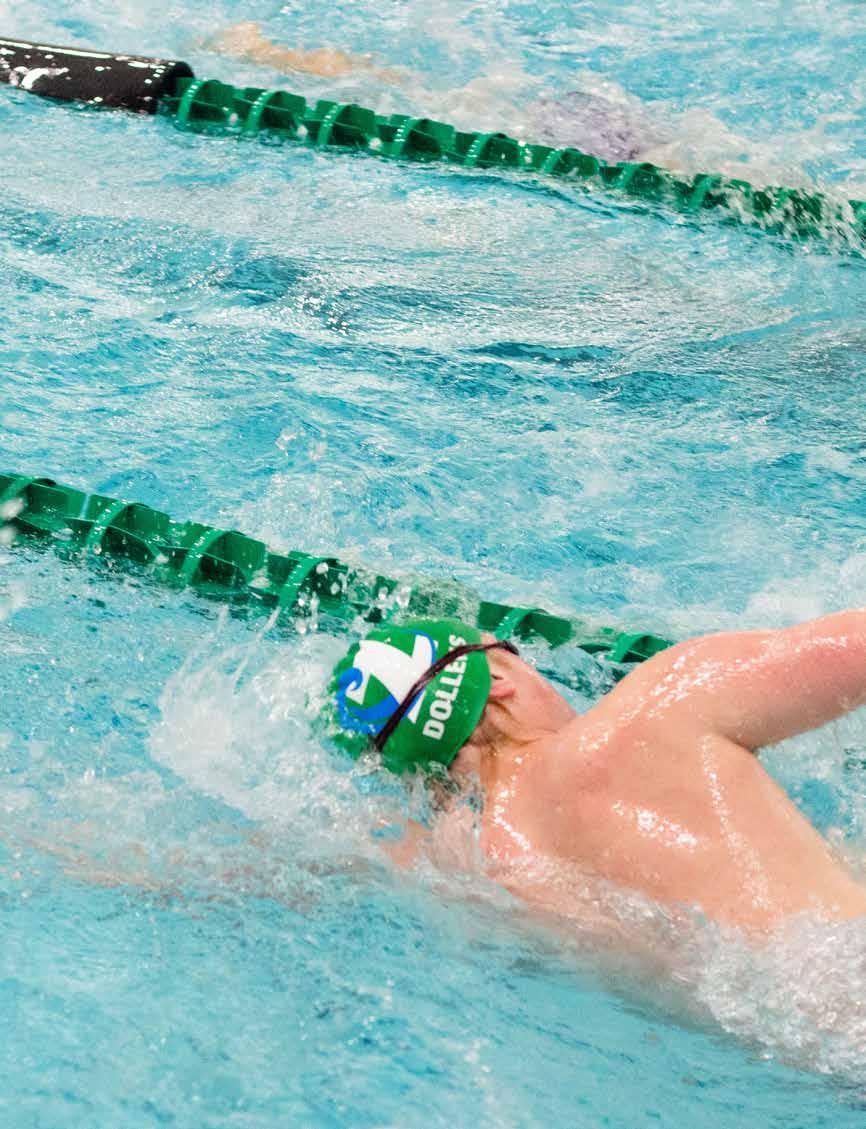
By Srinithya Basireddy, Perspectives Editor
From Mommy and Me swim classes to swimming on the Zionsville Swim Club national team, T. Dollens has been swimming since he was 7.
E. Dollens joined two years later, not only because his brother was doing it but also because he wanted to challenge himself physically and be a part of a team.
“I think it brought us closer because we have swimming in common and spend so much time together,” E. Dollens said. “It’s definitely made us closer.”
According to E. Dollens, slowly improving over the years is satisfying, and he likes chasing that feeling.
They often swim side by side during meets and practices, where they hold each other accountable.
“We’ve woken each other up for practice more times than I can count,” E. Dollens said. “And we always cheer for each other during races.”
The sibling rivalry is a motivation and healthy for both swimmers, according to T. Dollens. He said being older has a self-imposed pressure to be better than his brother.
“I’d say I’m a bit better at swimming but it’s close, which keeps it fun,” T. Dollens said. “If one of us has a better race, we’re not rubbing it in each other’s faces; it’s all about getting better.”
E. Dollens agrees with T. Dollens’ view of their friendly competition.
“We’re competitive, but not to the point where we get angry,” E. Dollens said. “If I beat him in a relay, I’ll let him know, and if he beats me, he might splash some water at me—but it’s all in fun.”
According to T. Dollens, he and his brother push each other every day. Racing during practice is just one way they motivate each other.
“During meets, especially if we’re right next to each other, I’ll do my best because I know I can’t get beat by him,” T. Dollens said.
Their father, chemistry and physics teacher Michael Dollens believes they are also improving in other aspects of their school life. From bringing the boys lunches to letting them use his room to study, M.Dollens has been supporting his sons in all aspects of their lives.
“Having a dad who works at the same
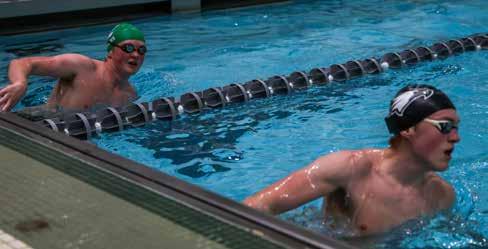
school is mostly helpful; I can stop by his room for coffee or just to talk to him when I’m having a bad day,” T. Dollens said.
According to M. Dollens, they’ve had each other’s backs from a young age.
“When T. Dollens was 12, E. Dollens would be across the pool, getting in his face and yelling at him to hurry up,” M. Dollens said. “Now older, they’re less outwardly enthusiastic but remain close.”
M. Dollens does his best to show up for his sons, in all areas of their lives.
“At swim meets, my priority is being a dad, and within that, I’ll try to be a mentor the best I can,” M. Dollens said. “I don’t find it difficult.”
According to M. Dollens, Toby and Eli are more invested in each other’s success now than they used to be, especially during the high school season.
“They’re each other’s biggest cheerleaders,” M. Dollens said. “When one has a bad swim, the other is right there to lift him up. That’s good to have somebody like that on your team.”
When asked about their favorite memories in swimming, all three Dollens said the same thing; last year’s sectionals.
“We were racing the 100 freestyle, side by side. I slipped off the block and fell behind, but I managed to out-touch him by a fraction of a second,” T. Dollens said.
Though they lost that meet, it showed how their friendly rivalry pushed them to do their best in the pool.
“He didn’t want to lose which motivated me to go faster,” E. Dollens said. “I got a really good time in that race, so it’s a fun memory.”
Both boys balance school, swim practice,
and teaching swim. According to T. Dollens, constant schedules of practices, races, and school require prioritizing.
“Swimming doesn’t conflict with school; it conflicts more with other things I might want to do,” E. Dollens said. “But you need to prioritize school.”
M. Dollens agrees, saying that student-athletes need to, “find the balance between knowing they’ve done a lot and also [knowing] they could have done more.”
With nine practices a week, T. Dollens manages to fit everything into his schedule.
“Swimming is also a great stress reducer,” T. Dollens said. “Once I’m in the pool, I focus on breathing, not my worries.”
But they bond outside of swim season as well. In the off-season, going to the gym together and playing basketball in the driveway are some of the ways they like spending time together.
“It’s fun and keeps us active, which helps our swimming too,” E. Dollens said.
As T. Dollens prepares to graduate and start college, he hopes to continue swimming on a club team, while E. Dollens is focused on finishing high school and improving his time.
“Swimming is a big part of who I am,” T. Dollens said. “If I go [to school] somewhere smaller, I could join the college team without the pressure of a D1 commitment.”
For now, both brothers are focused on improving their times and enjoying the season. As T. Dollens goes through his last year of highschool, he hopes to make the most of his time here, as does E. Dollens.
“We share a really close bond,” E. Dollens said. “I hope to make as many memories I can with him before he goes off to college.”
Indiana branch of Innocence Project to release wrongfully convicted from jail with new DNA technology
By Ellie Vanderbur, Print Editor
Imagine spending years of your life behind bars for a crime you didn’t commit. Though it may seem unlikely, it’s a reality for an estimated 1% of those in prison, according to Harvard Public Health. While the United States Criminal Justice System prides itself on the statement “innocent until proven guilty,” some individuals are proven guilty when they are, in fact, innocent.
In response to this unfortunate truth, the Innocence Project was founded in 1992. This organization utilizes its strong legal teams and advanced forensic technology to reopen cases and overturn wrongful convictions. To date, the group has helped release 251 people nationwide, leading to the creation of an Indiana branch, INIP, in Aug. 2024, highlighting the importance of local representation in court.
“One of the things that the innocence work has exposed is the reality of the variables behind wrongful conviction, such as witness [misidentification], police misconduct, false science,” president of the Indiana Innocence Project Frances Watson said in an interview with Mirror Indy.
The large number of inaccurate rulings is due to some people being convicted before advanced DNA testing was available to prove their innocence. At ZCHS, forensics class focuses on how to obtain and analyze crime scene evidence for use in court.
“A lot of the cases that the Innocence Project works on are cases where someone was convicted just through eyewitness accounts of what someone saw,” forensics teacher Dawn Makley said. “[In forensics class] we talk a lot about memory and how it’s not as reliable as we think it is and how false memories can be created.”
To combat this inaccuracy, scientists have developed technology to compare the

DNA of multiple suspects to the DNA found at the crime scene. This allows old evidence to be reexamined and cases to be reopened.
“Without DNA [evidence], no one would ever believe public defender people like me who said they’re innocent,” Watson said. “Then DNA [analysis] comes along, and the math is the math, and the numbers are the numbers, and they don’t lie. You have the wrong man in prison, and you lied to put them there.”
Because DNA analysis and the exoneration process is so lengthy, Indiana having its own sector is especially important. Another reason for its creation is because the state has a higher incarceration rate than 26 other states as of 2023, according to the Prison Policy Initiative. It is also necessary because before its creation, there were 47 successful exonerations in Indiana, according to the Indiana Innocence Project.
Graphic by Srinithya Basireddy
freedom, getting back to regular life is not easy. To help with this transition, in 2019 Indiana established Act 1283 which provides $50,000 for each year someone spent wrongfully incarcerated.
“Additionally, exonerees are able to access any services offered by the Department of Correction, Community Corrections, or the courts, including: mental health services, substance abuse services, transition programs, and other rehabilitative and reintegrative resources,” according to the Indiana Innocence Project.
The organization aims to improve the Criminal Justice System and give hope to everyone affected by the legal system—all Americans.
“DNA [analysis] comes along, and the math is the math, and the
numbers
While this may seem like a high number, the local department will increase the success rate of exonerations because legal groups will be closer to those they are defending, rather than having to travel long distances to talk with them. It will make their cases faster and more reliable because the defense will create a stronger connection to their defendant.
are
the numbers...
You have the wrong man in prison, and you lied to put them there.”
- Frances Watson, INIP president
Reexamining these cases requires a lot of time and effort by many people. Success is not always guaranteed, but when achieved, it is a huge victory for the exoneree, their family and the lawyers who fought for them. Even though they have accomplished this incredible feat and won back their
“[The Innocence Project] shows students just how important it is to make sure that [investigators are] collecting physical evidence at a crime scene and processing it correctly in a way that’s rigorous and scientific,” Makley said.
No one should be forced to waste years of their life in prison while someone guilty gets to live free. It is inexcusable for our legislation to allow people to fall through the cracks like they have in the past. Science and law has advanced so much to help people and it can only continue to improve. No one should live in fear of imprisonment when they have done nothing wrong.
“You need organizations that are willing to say that [there are wrongful convictions], raise money and then dig in deep, because the cases take a long time,” Watson said.
By Emmy Lucas, Feature Editor
Whether it’s a morning Starbucks coffee or an energy drink before sports practice, caffeine is a staple in our daily routines.. What we aren’t thinking about while we’re sipping our daily dose of energy, is how it’s affecting our health in the long run.
For most students when it comes to drinking caffeine, the goal is improved concentration, or a quick boost of energy. Caffeine is a stimulant, which means it increases activity in the nervous system and increases the flow of cortisol and adrenaline in your body, according to Better Health Channel. So in small doses, yes, it will increase your focus. But in large amounts, it can have negative effects such as increased anxiety, jitters, and trouble sleeping.
It’s easy for us to pick up a sweet and tasty energy drink in the morning, without knowing the actual contents of the drink. Most energy drinks have over 100mg of caffeine, some even having up to 300mg. Teenagers shouldn’t be drinking more than 100mg of caffeine per day, if any at all, according to Michigan Medicine Health. For Junior Lily Hough, her mornings wouldn’t be the same without her daily Alani energy drink.
“It helps me feel more awake and be able to focus more in school,” Hough said. “Just not feel constantly tired.”
After two years of having a daily energy drink, Hough doesn’t experience any negative side effects after drinking one, but by the end of the day she said her energy levels are low .
“By sixth period, around the end of the school day, I usually feel like I’m exhausted,” Hough said.
This is also the case for myself, and probably many other caffeine drinkers. The reason we have “caffeine crashes” is because we’re experiencing withdrawal symptoms. Caffeine blocks the neurotransmitter called adenosine, which promotes sleepiness and decreases your heart rate. As soon as the caffeine wears off, a large amount of built-up adenosine floods into your brain, quickly making you groggy and tired. Ultimately this leaves you wanting even more caffeine, and can set you into a cycle that’s hard to get out of.
Because it stimulates the central nervous system, caffeine is classified as a drug. Like other drugs, you can eventually start to build a tolerance to caffeine, and become dependent on it. After getting used to caffeine, if you don’t have any, it’s likely you’ll experience subtle withdrawal symptoms like headaches, anxiety, or crankiness, which can get worse over time.
School nurse Gia Ogden compares caffeine to other, more serious addictive drugs.
“Obviously it’s a different level, but yeah, it’s addictive,” Ogden said.
During these years of our lives, sleep is one of the most important things for our brain development. Having caffeine as early as even six hours before bed can disrupt your sleep cycle without you even knowing, according to Houston Methodist Health.
“Sleep is really critical for us, it’s also helpful for our regulation of emotions and our immune system,” said Ogden. “It helps with our academic performances and also
How caffeiene disrupts health and sleep patterns in teens
helps with anxiety and depression”
Some of the most common reactions that kids face drinking caffeine are heart palpitations, and feelings of anxiety or uneasiness. The list of long term effects from caffeine goes on, as it will negatively impact your heart, brain, blood pressure, and overall central nervous system.
For those who really can’t go a morning without a boost, Ogden suggests making sure you’re consuming caffeine in moderation.
“Limit yourself to one a day,” Ogden said. “And try to drink it in the morning.”
For energy drink lovers, it’s important to know the amount of caffeine that’s in the drink you’re consuming, as some can have more caffeine than you think. Ogden recommends trying tea, coffee, or soda as a substitute for energy drinks, as these usually have significantly less caffeine.
“You have one body,” Ogden said. “Take care of it, it’s all you get.”

There are certain things that feel like winter. The Harbinger staff reviewed them based on the listed criteria.
By The Harbinger Staff






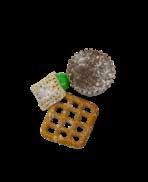
Dr. Seuss’ How
The Grinch Stole Christmas (1966)

Dr. Seuss’ How the Grinch Stole Christmas (2000)
By Josie Brackett By Marissa Villarrubia
The holidays give that old, nostalgic feeling and that is exactly the feeling Dr. Seuss’ “How The Grinch Stole Christmas” (1966) gives. Growing up, it is the first Christmas movie of the year I would watch with my mom. I imagine myself as a child curling up on the couch with her and a big bowl of popcorn to kick off the Christmas movie season. From the Dr. Seuss seal you see in the beginning, it immediately transports you into a world of childhood memories. The opening song is probably the most nostalgic part of it because I had always mimicked it with my family at the mention of the Grinch. There is something so classic about the animation that makes this version so superior to me. The original, ‘old-timey’ voices and the original soundtrack make it so special to me. As a Grinch enthusiast, this version is without a doubt the most ‘Christmas-y’ feeling one to me.
Dr. Seuss’ The Grinch (2018)
By Srinithya Basireddy
The 2018 version of “How the Grinch Stole Christmas”, titled “The Grinch” is the same classic tale, but better. By blending animation and lifelike images, this adaptation balances the humor and sentiment around this movie. Unlike the over-the-top effects in Jim Carrey’s 2000 version or the simplicity of the 1966 original, this version uses the perfect visuals that make it timeless. The expanded storyline adds more depth to the Grinch’s backstory as well as makes the town of Whoville a more charming place. Overall, this version provides a modern vibe while appreciating Dr. Seuss’s original. With its stunning visuals and heartwarming moments, this version perfectly captures the magic of Christmas, making it the ultimate cozy holiday movie.

Released in 2000, “How The Grinch Stole Christmas” is a staple of our generation. Jim Carreys’ performance as the Grinch made for a heartwarming, hilarious live action remake. Although I’m normally not a fan of live action remakes, this one made my short list of exceptions due to the immersive experience it gives each viewer. Part of this is the elaborate costumes for each character, including Martha May Whovier in her baby blue robe with white feathery trim. Marthas’ outfits aren’t the only thing that added to the experience since Cindy Lou Who had extravagant hairstyles that changed for almost every scene. Watching this as a kid got me excited for the winter months despite the cold weather and early sunsets.




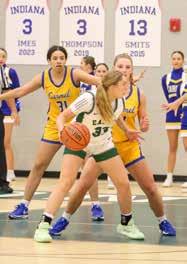


Unscramble the headlines, follow and DM the @zchsharb Instagram with your answers to win a prize, winner announced on 12/13!
“I think [the game] will be really fun to watch, we’ll be even better than we were last year,” Mitchell said.
